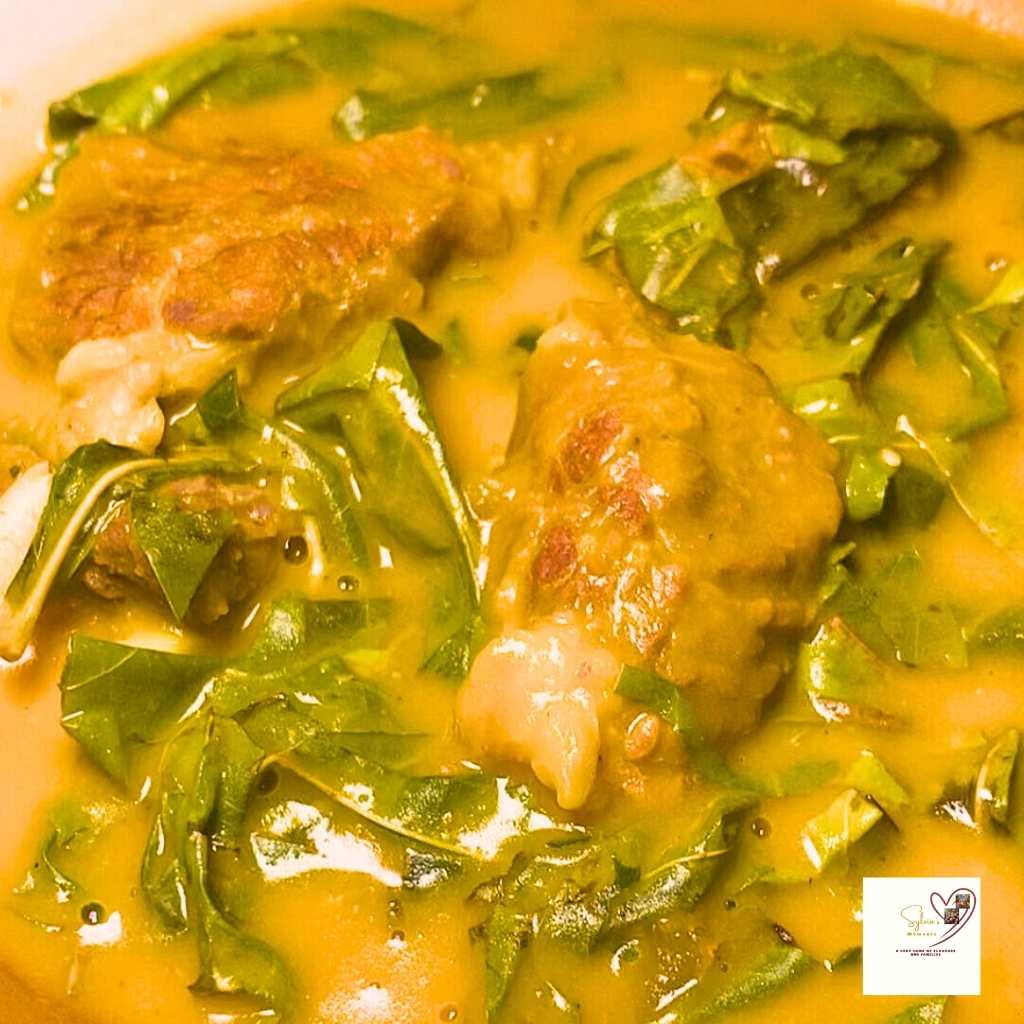Ofe Oha [Oha Soup in Igboland] connects us to culture, flavor, and cherished family traditions. Growing up in South Eastern Nigeria, I experienced Oha soup as more than just food; it was a true symbol of love and heritage served on a plate.
I first spotted the Oha tree on a bright Christmas morning at my grandmother’s compound. Later that evening, my aunty called someone to pluck its fresh leaves, and they were quickly transformed into a steaming pot of Oha soup we all enjoyed together.
From January to March, Oha trees flourish in the dry, humid harmattan season, which makes the soup even more unique and special. Just like Bitterleaf soup, Ofe Oha takes center stage at family gatherings, festive occasions, and traditional Igbo celebrations.
In this blog, I’ll guide you through the key ingredients, cooking steps, and time-tested secrets that make Oha soup irresistible. With palm oil, cocoyam, assorted meat, and of course, fresh Oha leaves, you can create a dish bursting with flavor, culture, and warmth.
Key Ingredients For Making Oha Soup
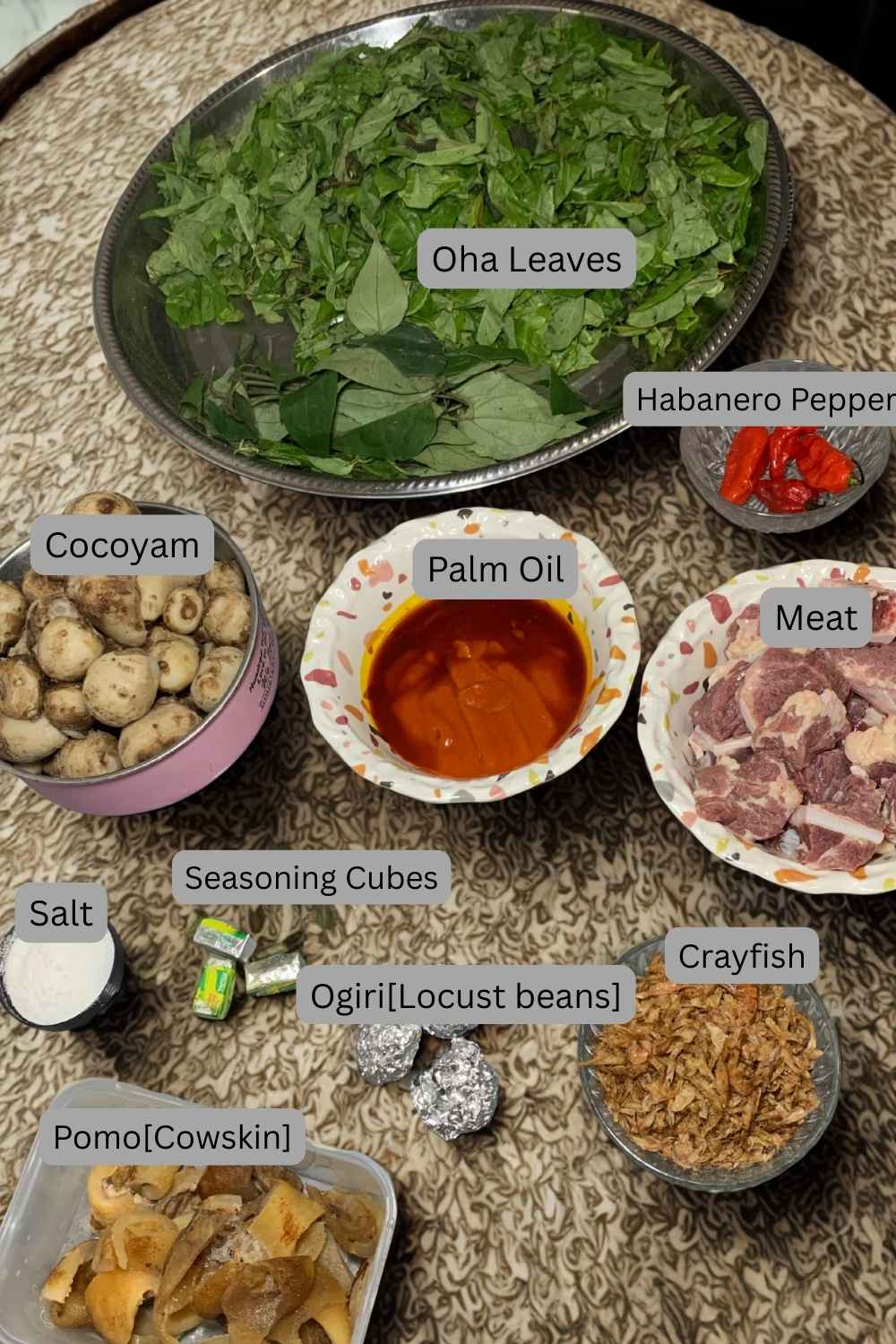
- 1kg of Oha plucked leaves
- 1/4 kg of Uziza leaves
- 1kg of Fresh Cocoyam [thickener]
- 2kg of Beef
- 1/4kg of Stockfish [Optional]
- 1 teaspoonful of fermented locust bean [Ogiri Igbo]
- 1 cup of Palm Oil
- 1/2 cup of Crayfish
- 3 Habanero Pepper
- 3 Seasoning Cubes
- Salt [to taste]
Step-by-Step Guide on How to Make Oha Soup
Total Cooking Time→ 60 minutes
No of Servings→ 8
Ingredient Preparation
- Step 1→ Spice and cook your Meat till it is 1/4 done. This is to allow the meat to absorb all the flavors from the seasoning and that of its own. That way, it is tastier. At this point also, if you are using stock fish for flavor, soak it in a very hot water for 2-3 minutes and wash thoroughly using luke warm water. After washing, add it together with the meat and other proteins and cook all together.
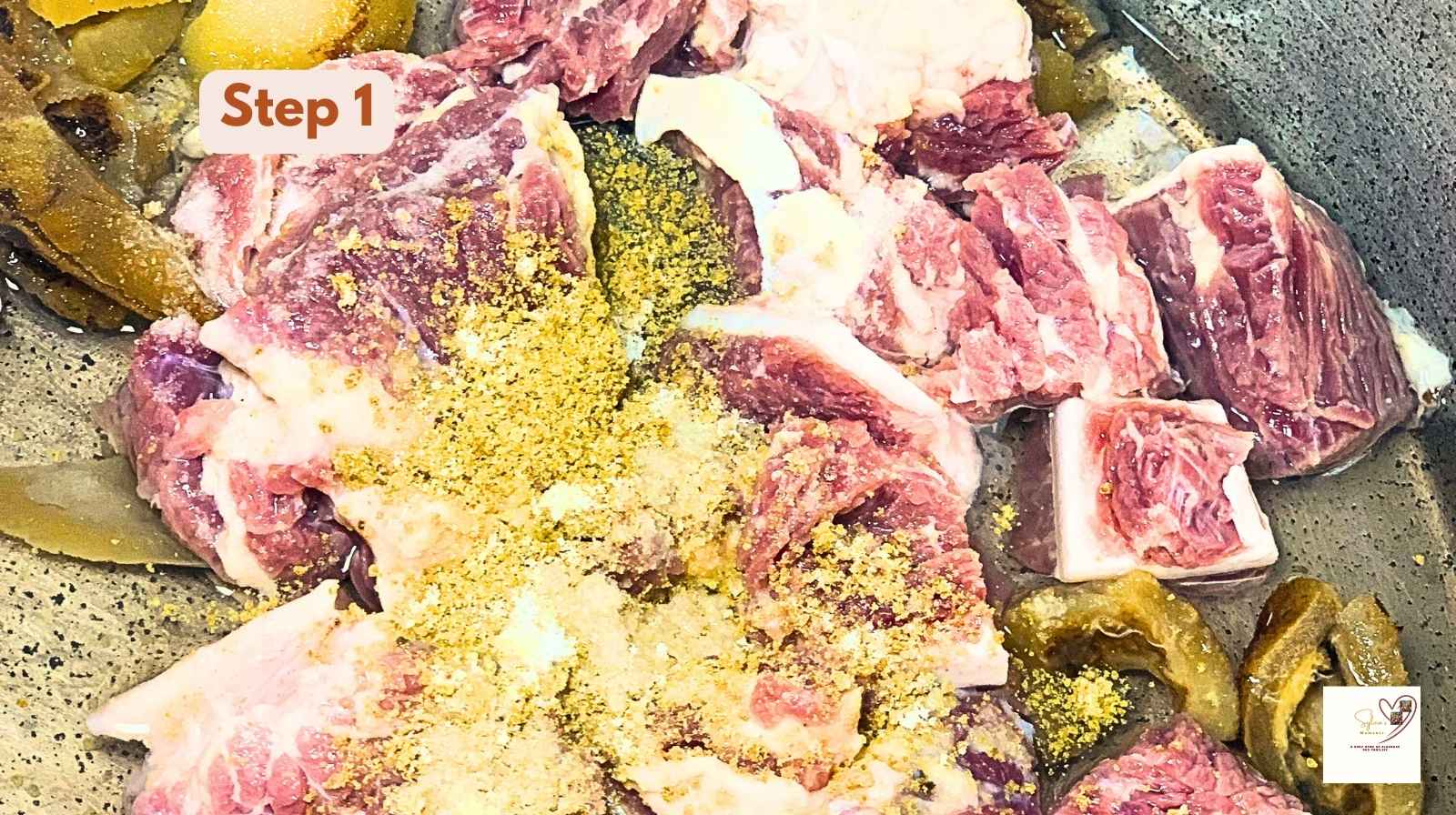
- Step 2→Cook your cocoyam, Let it bubble on heat until the flesh loosens soft. Remove the shell and blend till it is smooth. Without blender, pound in a mortar or use manual food processor. The aim is to get a smooth paste devoid of lumps for easy dissolving into the soup.
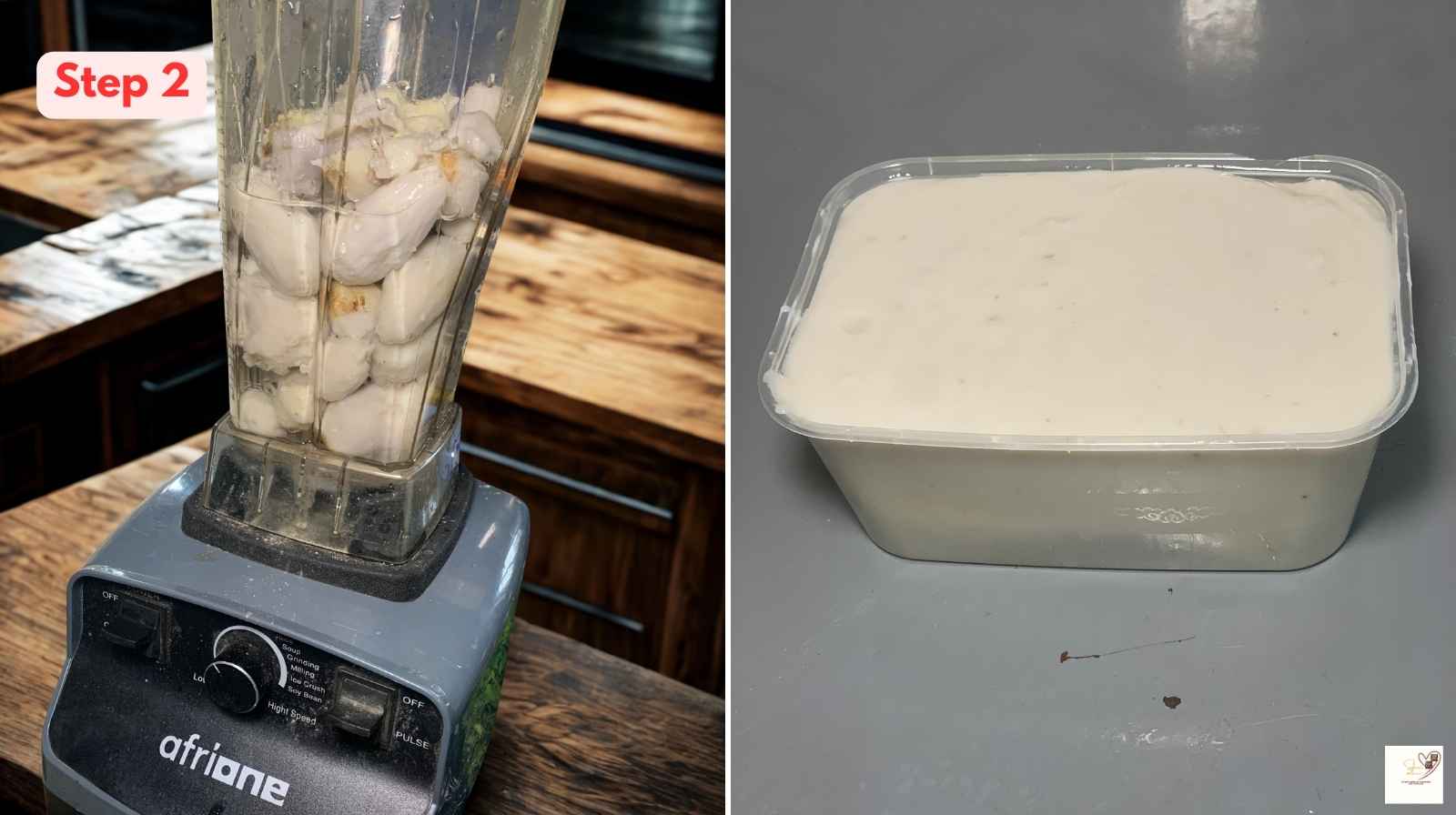
Step 3 →Wash and Blend your Crayfish and Pepper into a smooth paste. Set aside for later part of the cooking.
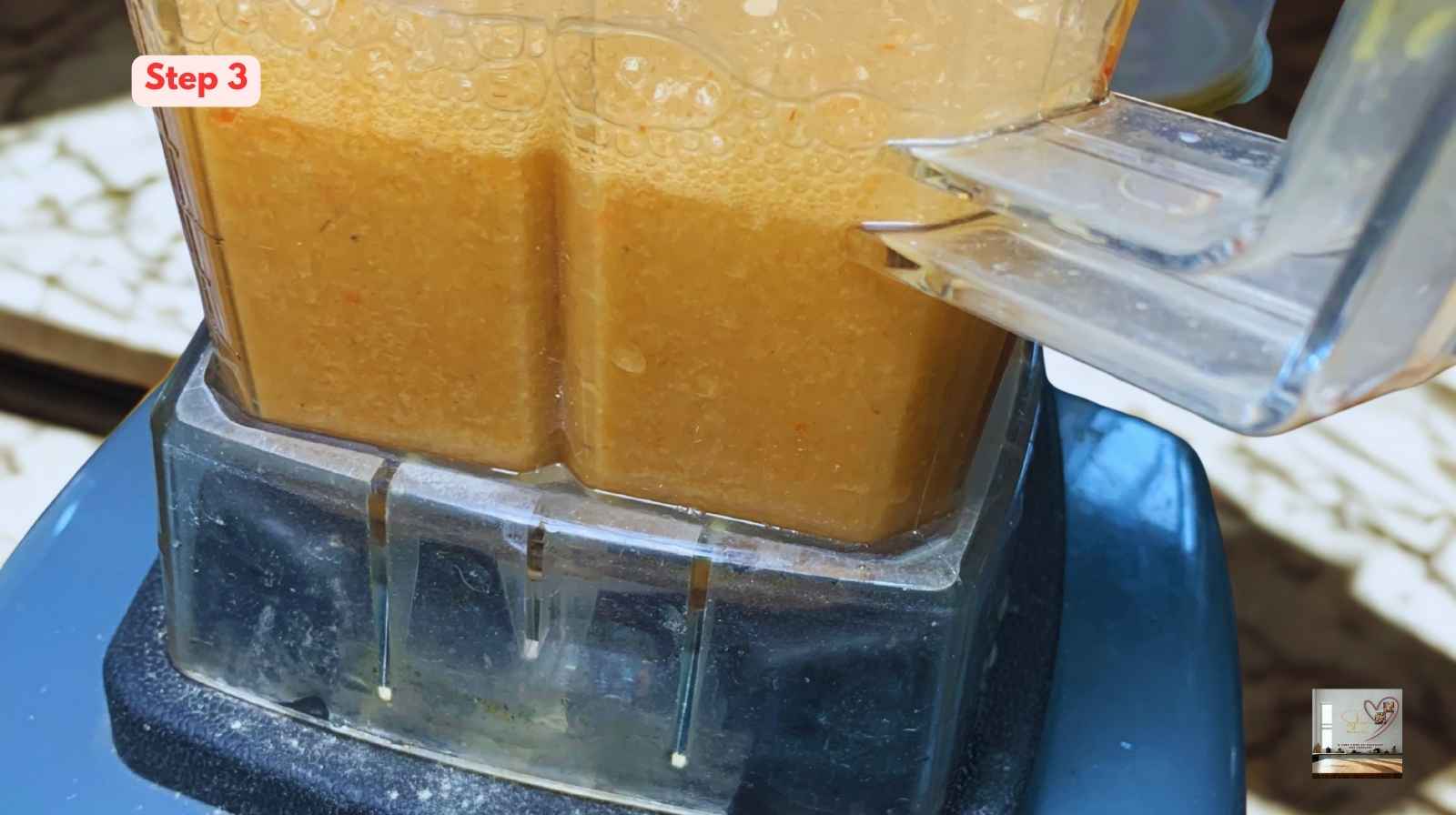
Step 4→Destalk the oha leaves and the Uziza Leaves. Wash thoroughly with salt in a clean water and slice into big portions. Do not slice the Oha thinly. This is to avoid the vegetables getting too soggy into the water.
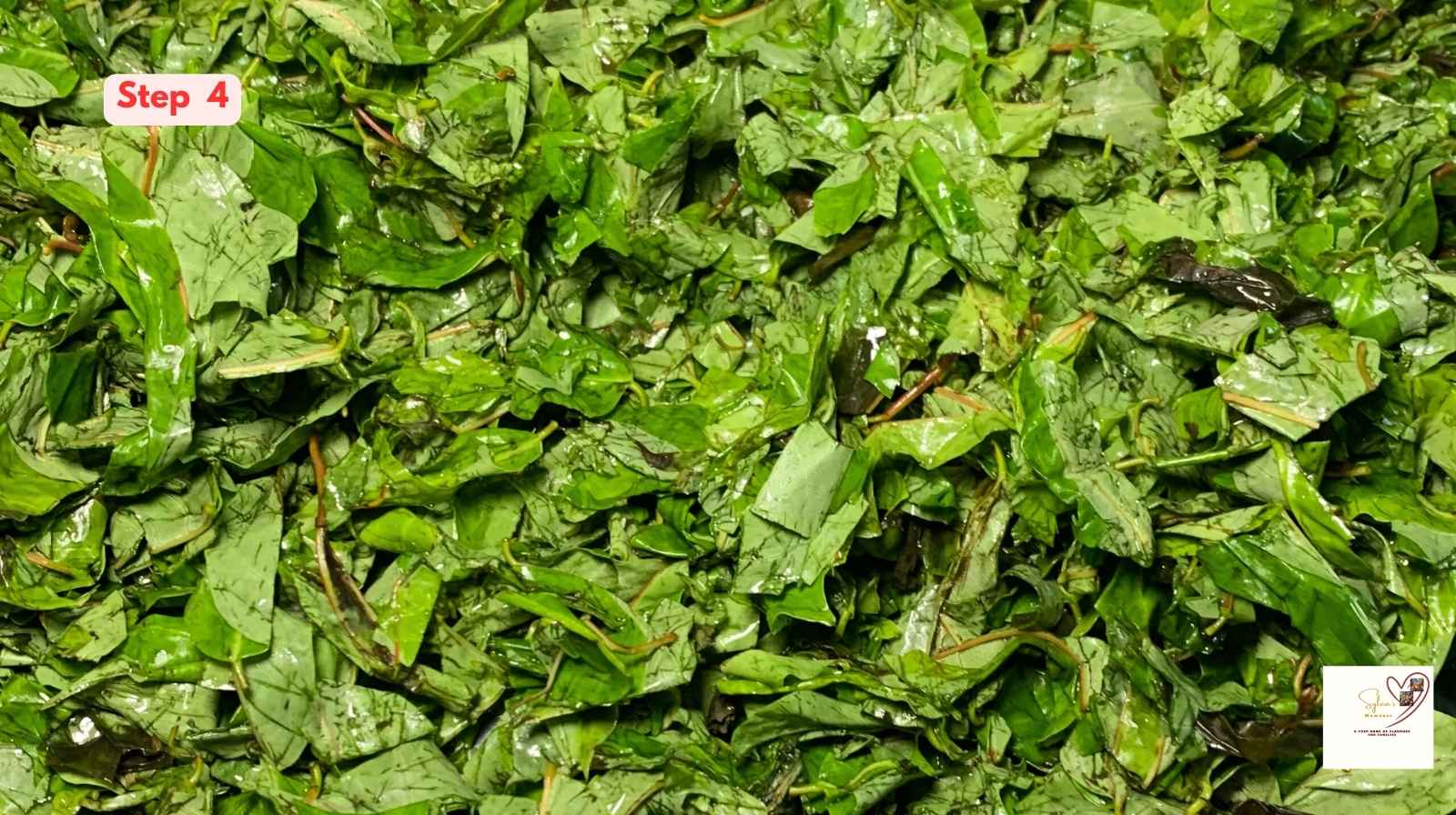
Cooking of Ofe Oha [Oha Soup in Igboland]
Step 5 → In the boiling pot of meat which is 1/4 done, cooked for about 5-10 minutes [depending on the type of meat],add water 3/4 of desired soup quantity .Once it start boiling, add palm oil ,cover the pot and allow to boil for up to 7 minutes for the oil to spread on the water.
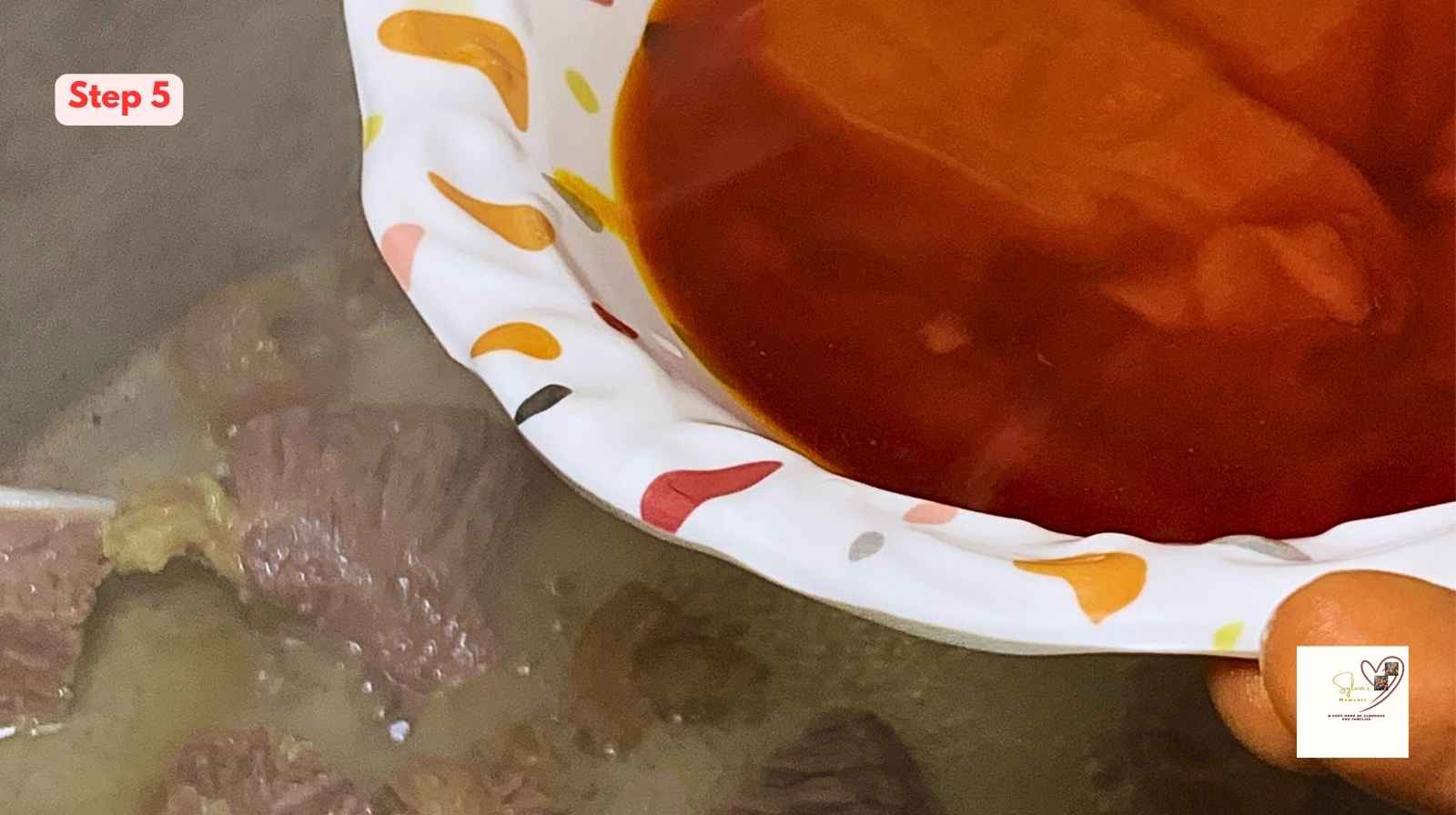
Step 6→ Add blended Cocoyam paste one scoop at a time till you get the desired thickness. If you are using other thickeners especially the powdered thickeners, dissolve them devoid of lumps in hot water before adding them into the pot bit by bit.
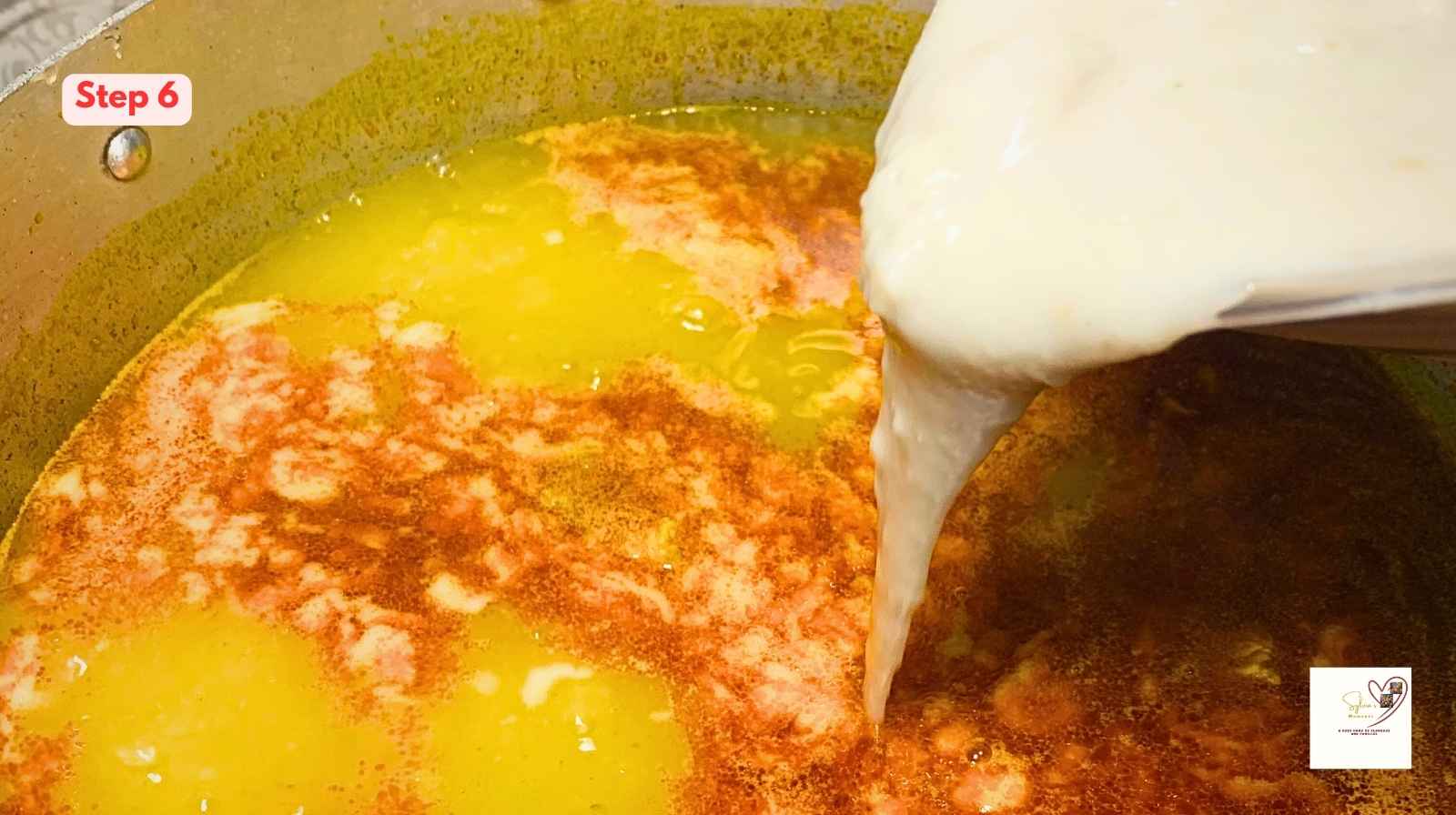
Step 7→Once all the coc0yam paste in the soup have dissolved and the desired consistency is met, add blended crayfish and pepper mix. This helps to put in more flavors in the soup while making it a bit spicy.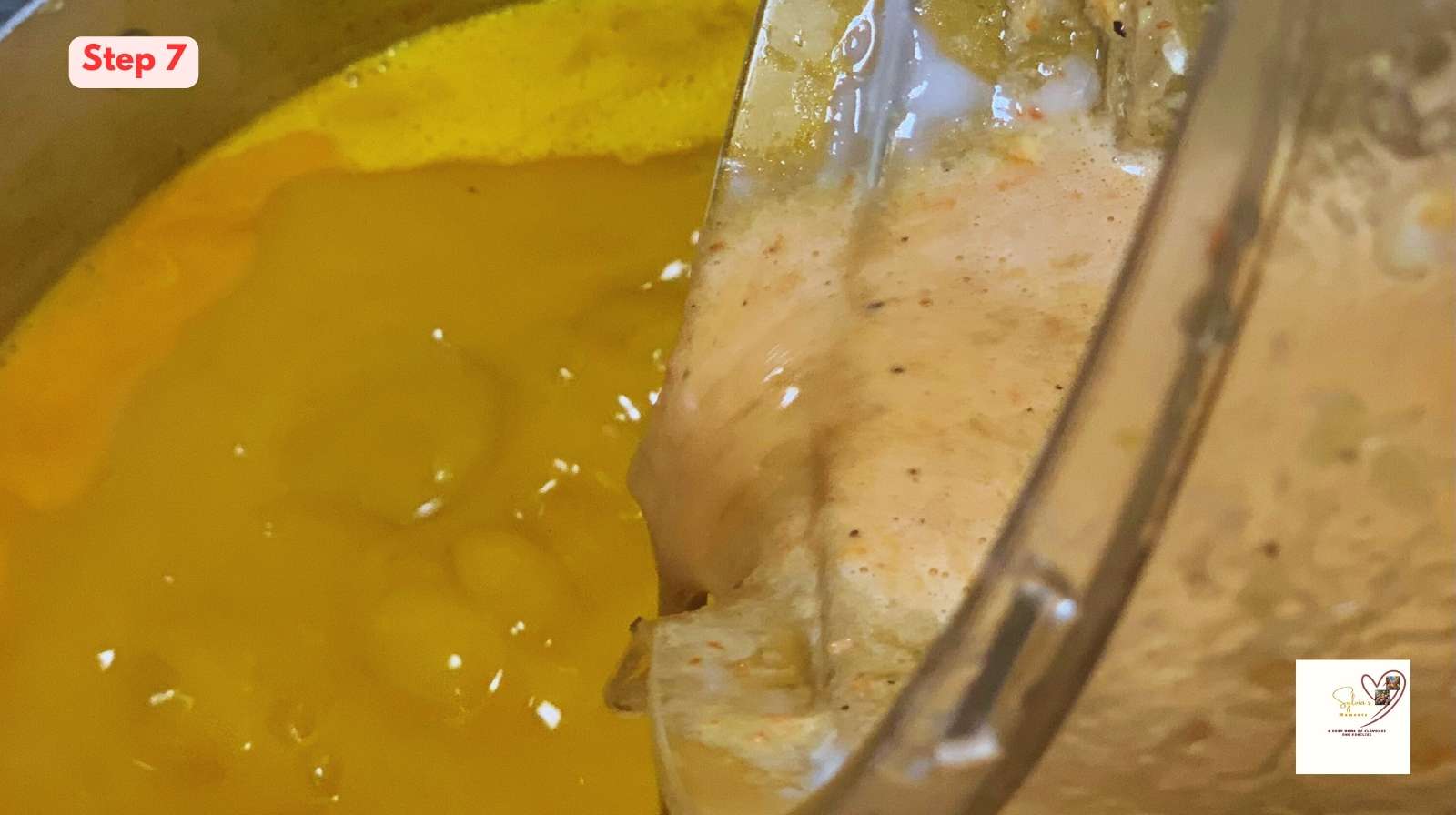
Step 8→ Add the fermented locust beans[Ogiri Igbo] ,which by the way is the secret ingredient for that authentic Nigeria Oha soup. Once the crayfish dissolve completely, introduce Ogiri and allow it to dissolve completely into the soup while turning the soup to avoid burning for about 5 minutes. Ogiri adds more umami flavor to the bitterleaf soup .
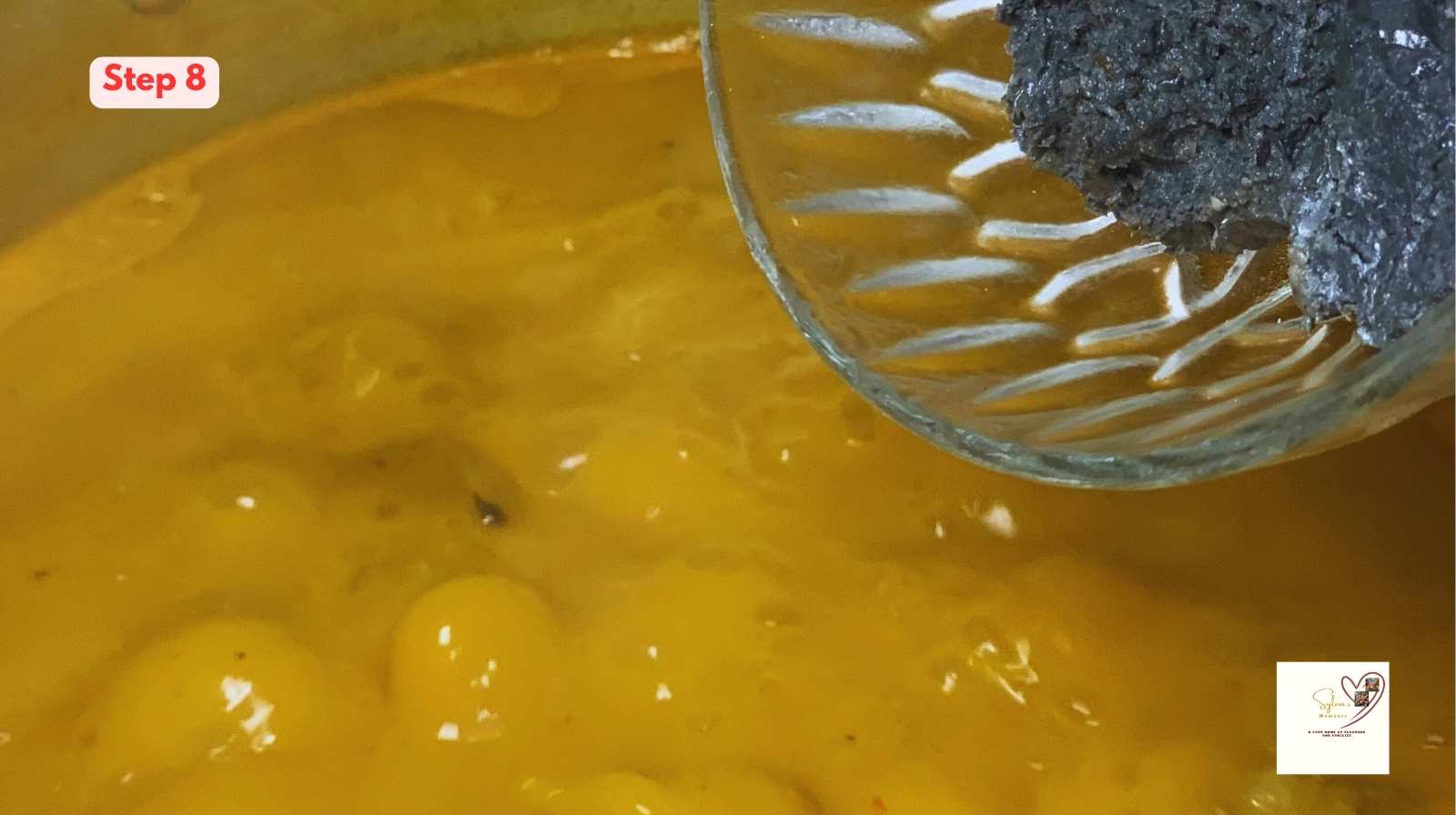
Step 9→Add the seasoning and salt and adjust the spices. At this stage, all the natural flavors of the soup have been released into the soup water and adjustment of seasoning is easier to avoid mistakes.
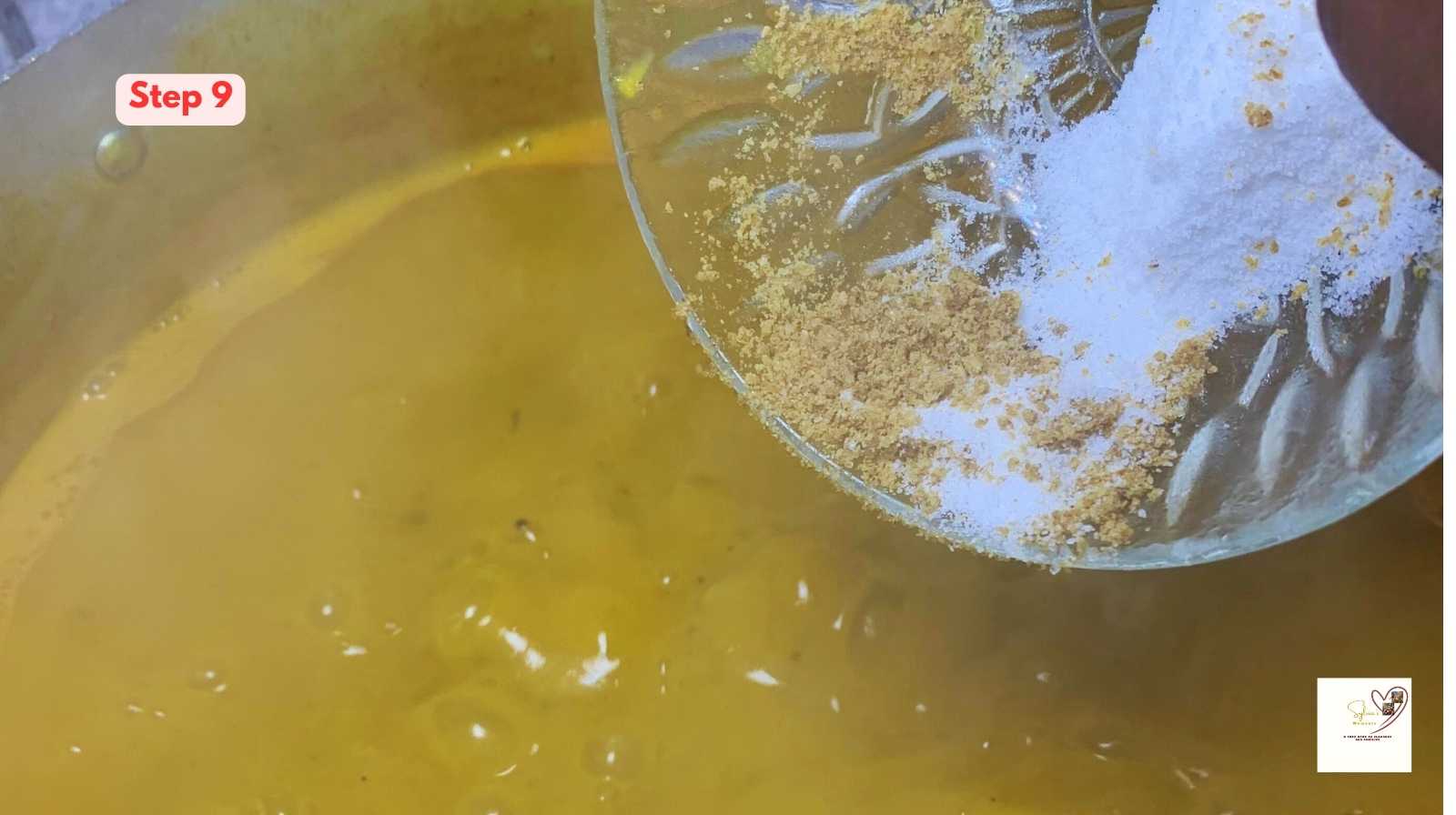
Step 10→ Add washed and sliced oha leaves and uziza leaves [or their alternatives] and allow to simmer for about 4 minutes, Turn the whole soup with turning stick to distribute the leaves evenly in the soup and turn off the heat.
Adding Oha Leaves Last
In every authentic Oha soup recipe, one golden rule stands out; always add the fresh Oha leaves at the very end. To begin with, this simple step is the key to keeping the leaves tender, vibrant, and packed with nutrients. Furthermore, when you add them too early, the heat will make them lose color, flavor, and even texture.
In fact, you can think of Oha leaves as delicate vegetables, just like spinach and okro. For example, no one boils spinach for half an hour because it would lose all its goodness. In the same way, Oha leaves need only a short time in the soup. Therefore, wait until your soup is almost done, then stir in the leaves gently and allow the steam to soften them naturally.
Even more, my grandmother always emphasized this point. She would often say, “Oha is the crown of the soup. You never bring out the crown before the king arrives.” Because of this advice, I learned that adding Oha last always keeps the soup bright, aromatic, and flavorful.
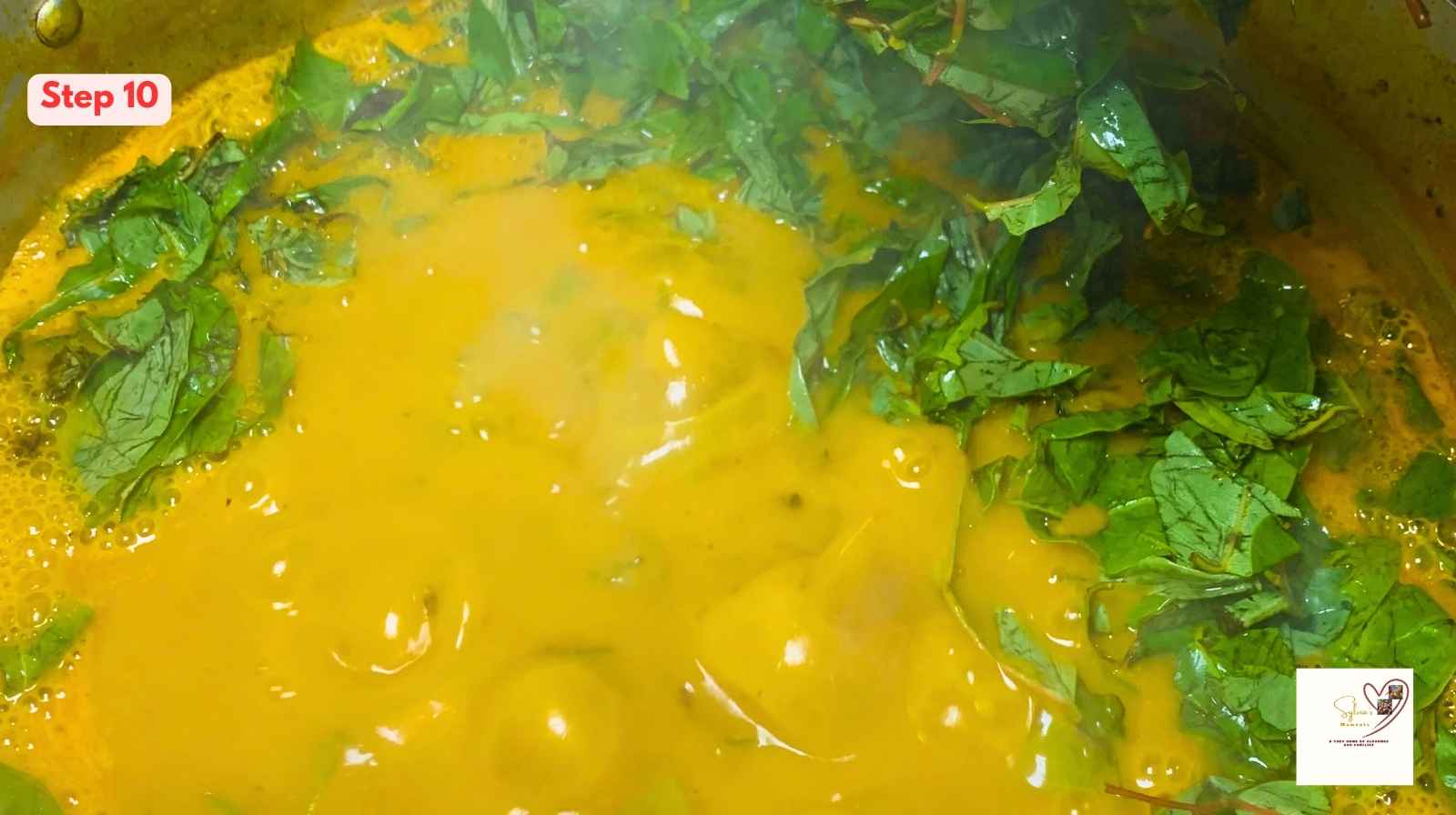
Pro Tips for the Best Oha Soup
- To easily get the consistent of the soup without it getting too thick, add your thickener bit by bit. If you are using thickeners in flour form, dissolve completely in hot water making sure no lumps is formed and introduce bit by bit into the soup.
- Do not slice your oha leaves thingly. Slice in such a way that each leaf of the oha soup will be divided in two only to avoid it getting soggy.
- Once you add blended cocoyam to the soup, make sure you turn at intervals to avoid the soup getting burnt underneath.
- Cook Oha soup in moderate heat to avoid burning.
- Add water bit by bit until you get desired amount of soup and consistency.
Thickener Substitutes for oha Soup
If you stay in the region where fresh cocoyam is out of reach, you can try other thickener options like;
- Powdered Cocoyam
- Ofor powder [Sweet Detar]
- Achi Powder [Brachystegia Eurycoma]
- Quaker Oat flour
Serving Suggestions
When it comes to what to eat with Oha soup, you have plenty of delicious options.
- Traditionally, Oha soup and fufu make the perfect pair, because the smooth texture of fufu balances the rich, flavorful soup.
- You can also enjoy Oha soup with pounded yam, which adds a stretchy, satisfying bite that many Nigerians love.
- Oha soup goes well with eba or semovita, both of which soak up the soup beautifully.
Health Benefits of Ofe Oha [Oha Soup in Igboland]
1. Rich in Vitamins and Minerals
Oha leaves contain vitamin C, A, and iron that boost immunity, vision, and blood health. The WHO confirms that vegetables lower disease risk and improve nutrition.
2. High in Protein from Meat and Fish
Adding goat meat, stockfish, or beef makes Oha soup a protein-rich Nigerian dish. According to Mayo Clinic ,lean protein aids growth, repairs tissues, and supports weight control.
3. Excellent Source of Fiber
Cocoyam and Oha leaves supply fiber that improves digestion and reduces cholesterol. Fiber may lowers heart disease and diabetes risk.
4. Packed with Antioxidants
Palm oil in Oha soup provides carotenoids and vitamin E, powerful antioxidants. Antioxidants protect cells and reduce inflammation.
5. Supports Heart Health
Oha leaves are rich in potassium, which helps regulate blood pressure. Potassium supports heart function and lowers stroke risk.
Frequently Asked Questions (FAQs)
-
Can I make Oha soup without cocoyam?; Yes,there are other thickening ingredients available. Aside from fresh cocoyam,you can use Achi, Ofor, Quakar oat to thicken the soup.
-
Can I freeze Oha soup? Yes,it can stay refrigerated up to 4 weeks .
-
What’s the difference between Oha soup and Ora soup? There is no different at all. The difference lies in the name variation from different tribes and languages. Whether you call it ”Oha Soup”, ”Uha Soup”, or ”Ora Soup”, they are all the same.
Storage Options for Oha Soup
1. Refrigeration for Short-Term Use Ofe Oha [Oha Soup in Igboland]
First, allow the Oha soup to cool completely before storing it. Next, transfer the soup into airtight containers to prevent contamination and lock in flavor. Also, place the containers in the refrigerator, where the soup will stay fresh for 3–4 days. Moreover, storing in smaller portions makes reheating faster and reduces waste.
2. Freezing for Longer Storage
For longer storage, freezing is the best option. However, it is advisable to freeze Oha soup without the leaves, because freezing makes them dark and less appetizing. Instead, freeze the base of the soup and, later on, add fresh Oha leaves while reheating. As a result, you enjoy both the flavor and nutrients of the dish without compromise.
3. Reheating Properly
When it is time to reheat, always warm Oha soup on low to medium heat. In addition, stir occasionally to prevent burning and ensure even heating. If the soup was frozen, then thaw it overnight in the refrigerator before reheating. Furthermore, add a splash of stock or water if it becomes too thick.
Smart Storage Tips
Finally, follow these extra tips to keep your Nigerian Oha soup safe and tasty:
-
Use freezer-safe bags or airtight containers to avoid freezer burn.
-
Clearly label containers with dates so you track freshness easily.
-
Portion into family or single servings, therefore making reheating simple and convenient.
Final Thoughts
Oha soup is more than a meal, it’s comfort, culture, and flavor in one pot. When you store it right, you stretch that goodness for days or even months. So, whether it’s a quick lunch or a family feast, your Oha soup will always taste fresh and feel special.
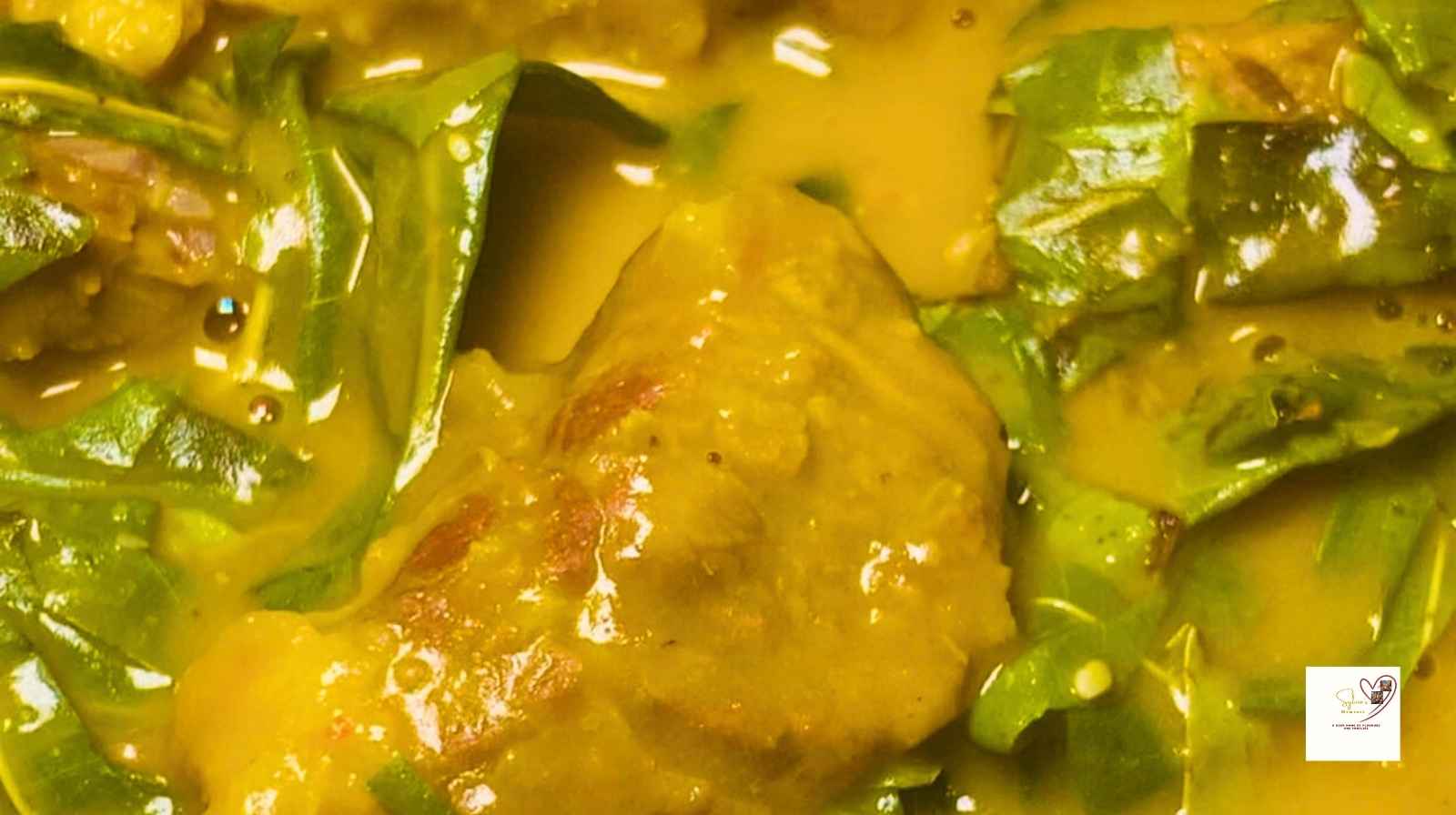
Will you love to try it as well as our African Bitterleaf Soup, Oiless Nigerian Stew and Oilless okro soup?
Watch the detailed video here.
